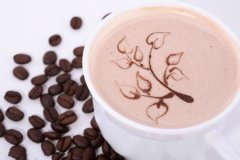Basic knowledge of boutique coffee 10 secrets about coffee

You may have a cup of coffee every morning, but I'm afraid you don't know much about coffee, do you? Although it's easy to pour a cup of coffee. I'm afraid the following 10 facts about coffee won't be acceptable to you for a while, but I'm sure you'll want a cup as soon as you finish reading it.
1. Coffee is actually a kind of berry.

This is incredible. Coffee is actually a kind of red berry. It grows on trees.
two。 Caffeine is beautiful.

Take a look at this picture. It's a close-up of caffeine crystals. More beautiful than the Mona Lisa.
3. Welcome to the coffee belt.

No, this map is not a hot spot these days. It's all the coffee producing places in the world.
4. Caffeine acts very fast.

Within ten minutes of your first sip of coffee, caffeine is already at work. How amazing.
5. Coffee does not cause dehydration unless you drink too much

For a long time. Coffee is considered to be a powerful diuretic. It removes moisture from your body, leaving you short of water. Modern research shows that as long as you drink no more than two cups of coffee a day, there is no problem of dehydration at all. But can you really resist just one drink?
6. Coffee can keep you young

Coffee contains a lot of antioxidants, which help the body get rid of substances called free radicals. Free radicals are a nuisance absorbed by the human body from the environment, which can lead to Parkinson's disease, diabetes and heart disease.
7. You can also take vitamins from coffee.
Nutrients in a cup of coffee: 1% of the daily recommended amount of vitamin B2, 6% of the daily recommended amount of vitamin B5, and 3% of the recommended amount of manganese and potassium. This is a healthy drink.
8. Drinking coffee makes you lose weight.
The caffeine in coffee can improve your basic metabolism. The study found that this improvement is considerable, may be as high as 11%, so if you fail to lose weight, have a drink.
9. Iced coffee is more expensive
Have you found that iced coffee is more expensive than hot coffee? That's because iced coffee is more troublesome to make, and it's another expense to add plastic trays and straws to match it. So let's keep it hot.
10. Black ivory coffee

Black ivory coffee is the most expensive coffee in the world, about $50 a cup. It comes from elephant droppings. It obviously tastes unique.
Important Notice :
前街咖啡 FrontStreet Coffee has moved to new addredd:
FrontStreet Coffee Address: 315,Donghua East Road,GuangZhou
Tel:020 38364473
- Prev

South Minas, the backbone of Brazilian boutique beans
Brazil is flat, with coffee farms mostly about 600-1000 meters above sea level, suitable for growing shade-free Kaddura, New World and Kaduai, also known as Sm CofFee. This is the main reason for the lack of aroma of Brazilian coffee (but when the altitude is more than 1100 meters, the taste of exposed coffee will improve, comparable to bourbon. See Chapter 4 of this book). The good news is that
- Next

Reveal the three magical uses of coffee beauty
Coffee, tea and cocoa are called the three major beverage plants in the world. Coffee, also known as Jia Jia, is called in Japan, Taiwan, Hong Kong and other places. Coffee tree is a small evergreen tree of Rubiaceae. Coffee for daily consumption is made from coffee beans combined with various cooking utensils, and coffee beans refer to the nuts in the fruit of coffee trees, which are then baked in an appropriate way.
Related
- Beginners will see the "Coffee pull flower" guide!
- What is the difference between ice blog purified milk and ordinary milk coffee?
- Why is the Philippines the largest producer of crops in Liberia?
- For coffee extraction, should the fine powder be retained?
- How does extracted espresso fill pressed powder? How much strength does it take to press the powder?
- How to make jasmine cold extract coffee? Is the jasmine + latte good?
- Will this little toy really make the coffee taste better? How does Lily Drip affect coffee extraction?
- Will the action of slapping the filter cup also affect coffee extraction?
- What's the difference between powder-to-water ratio and powder-to-liquid ratio?
- What is the Ethiopian local species? What does it have to do with Heirloom native species?

